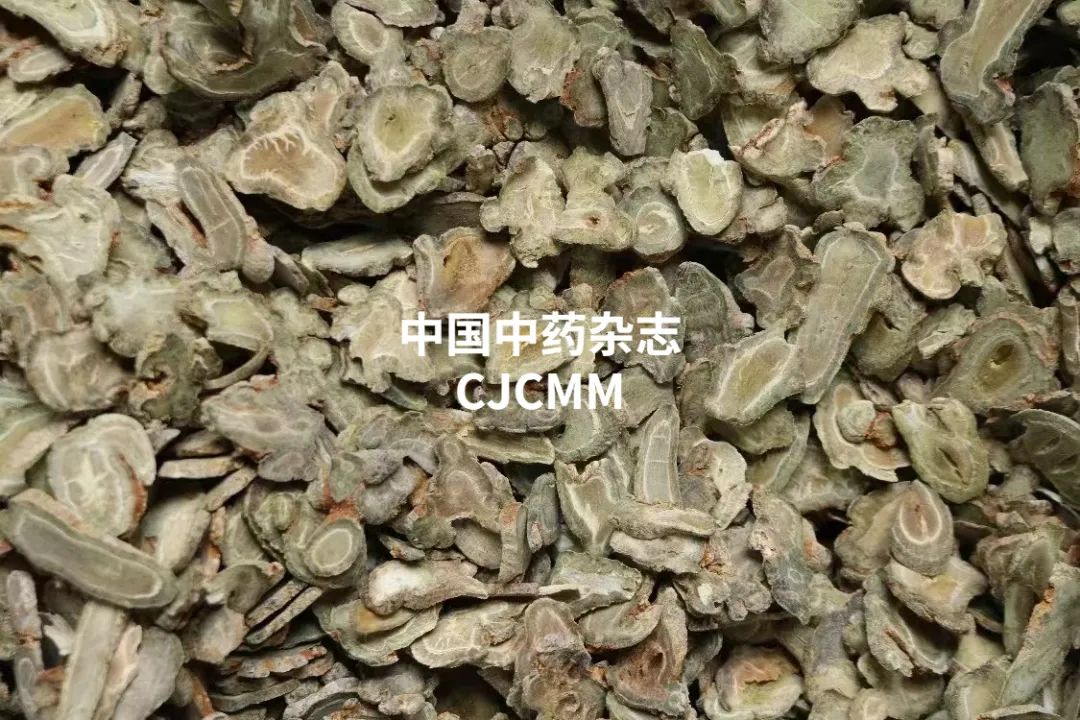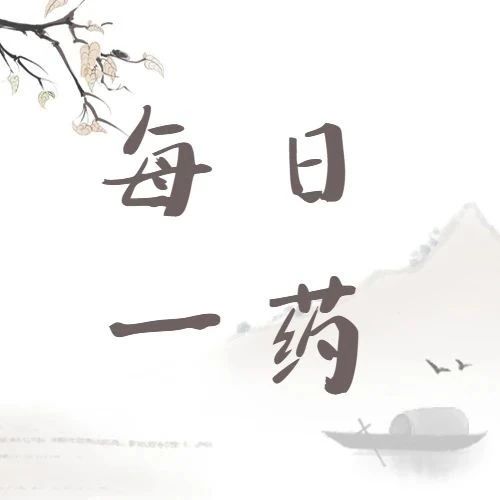
Author | Lin Zhichen Editor | Chunfeng Reviewer | Xiao Ye
Previously, while following my teacher in the cardiology department, I encountered many patients with coronary heart disease. Many patients would ask if they could take a box of Sanqi powder that they bought at home.
Sanqi (Panax notoginseng) is a herb that promotes blood circulation and stops bleeding. If a person has a generally weak constitution and is prone to blood stasis, with a dark purple tongue showing stasis spots and localized pain, it is appropriate to take Sanqi powder, as it can invigorate blood circulation and help recovery.
Today, we will discuss blood stasis and Sanqi.
What is Blood Stasis?
Blood stasis refers to the obstruction of blood flow, leading to pathological products such as stasis blood.
One can imagine the pig blood or duck blood we usually eat; when this blood leaves the blood vessels, it loses the push of Qi and the warming effect of Yang, solidifying outside the body and losing its normal physiological function.
The same principle applies within the body; when blood is stagnant or spills out of the vessels, it generates pathological products known as stasis blood, which not only loses its normal physiological function but also leads to adverse symptoms.
There are many causes of blood stasis, including trauma, Qi deficiency, Qi stagnation, blood cold, and blood heat.
Traumatic injuries can cause blood to leak from the vessels and accumulate locally, leading to blood stasis; Qi deficiency and stagnation can hinder blood flow, resulting in blood stasis; an imbalance of cold and heat in the body can lead to cold coagulating blood or blood heat congealing, which can also cause blood stasis.
The symptoms and diseases associated with blood stasis have their unique manifestations. Blood is transformed from the essence of food and circulates through our meridians, nourishing all parts of the body. The nourishing function of blood is a crucial foundation for the growth and normal function of muscles, organs, and other tissues.
Blood stagnation is like a once-clear road now congested, preventing the delivery of essential substances, leading to a lack of nourishment in the body’s tissues.
Areas where stasis blood accumulates will show a bluish-purple color; areas where blood is stagnant and not nourishing will exhibit pain, atrophy, and dull coloration, such as the common descriptions of stabbing pain, localized pain, pale complexion, skin issues, and localized numbness, all of which are manifestations of blood stasis.
Additionally, blood stasis is reflected on the tongue as a dull, purplish color, and on the pulse as a choppy or thin pulse.
Stasis blood obstructing different parts of the body can lead to various diseases, and many common ailments are closely related to blood stasis.
If stasis blood obstructs the heart, it can lead to chest tightness and heart pain; in Traditional Chinese Medicine (TCM), angina pectoris and coronary heart disease are often associated with blood stasis, and treatment emphasizes invigorating blood circulation and removing stasis.
If stasis blood obstructs the uterus, it can lead to abdominal pain, dark purple menstrual blood with clots, and conditions like dysmenorrhea, amenorrhea, and infertility are often related to blood stasis, requiring warming the meridians and invigorating blood circulation.
If stasis blood obstructs the brain, it can lead to dizziness, headaches, forgetfulness, and sudden fainting; conditions such as hemiplegia, memory decline, and speech difficulties can also be related to blood stasis.
Since blood stasis can lead to so many diseases, is there a blood-invigorating and stasis-removing herb suitable for the elderly or those who sit for long periods and have poor blood circulation? Sanqi is suitable for this situation.
Analysis of Sanqi
Sanqi is the dried root and rhizome of the plant Panax notoginseng, belonging to the Araliaceae family.
Sanqi is also known as Tianqi or Jinbuhuan. The Compendium of Materia Medica records its name’s origin, stating that Sanqi is very effective in treating wounds, promoting quick healing, similar to how lacquer adheres to wounds, hence it was called “mountain lacquer,” which gradually evolved into today’s Sanqi.
Sanqi has a sweet and warm nature, slightly bitter, and has excellent effects in dispersing stasis, stopping bleeding, reducing swelling, and alleviating pain.
The Compendium of Materia Medica records that ancient practitioners used Sanqi to invigorate blood circulation and remove stasis. To distinguish genuine Sanqi, they would mix Sanqi powder with fresh pig blood; if the pig blood could liquefy, it was genuine Sanqi; otherwise, it was counterfeit.
This herb can both stop bleeding and invigorate blood circulation, and one of its main characteristics is that it invigorates blood without harming it, stops bleeding without leaving stasis.

Why is it said that a herb that can both stop bleeding and invigorate blood is very special? Generally, herbs that invigorate blood circulation will increase the speed of blood flow, leading to increased bleeding; while herbs that stop bleeding will slow down blood flow, leaving stasis.
Sanqi is unique in that it can both stop bleeding and invigorate blood without leaving stasis. The properties of Sanqi in invigorating blood and stopping bleeding make it widely used in the treatment of wounds.
Sanqi not only effectively stops bleeding without leaving stasis but also has analgesic and tissue-regenerating effects, promoting wound healing.
In ancient armies, Sanqi was commonly used as a wound treatment. After injuries occurred in the field, ancient practitioners would sprinkle Sanqi powder on the wound or chew fresh Sanqi and cover the wound for treatment.
In modern times, Yunnan Baiyao, a commonly used medicine, also contains Sanqi as a main ingredient. Sanqi is known as the “miraculous herb for stopping bleeding” and “essential medicine for trauma,” highlighting its excellent efficacy in treating wounds.
In addition to its application in trauma, Sanqi is also used to treat various internal bleeding conditions, such as hemoptysis, hematemesis, melena, and metrorrhagia, demonstrating excellent effects in stopping bleeding without leaving stasis.
The Medical Records of Traditional Chinese Medicine records the formula Huaxue Dan: 9g of Huaruishi, 6g of Sanqi, and 3g of Xueyu charcoal, ground finely and taken with water in two doses.
This formula uses Huaruishi, which has a sour and astringent nature to stop bleeding and remove stasis, combined with Xueyu charcoal, which stops bleeding, removes stasis, and nourishes Yin and promotes diuresis, along with Sanqi, which invigorates blood and stops bleeding. The combination of these three blood-stopping herbs can quickly halt internal bleeding.
At the same time, it can transform stasis blood and nourish Yin blood, allowing stasis blood to be expelled and new blood to be generated. Huaxue Dan is commonly used for various conditions of hemoptysis, hematemesis, and blood in the urine.
Women who experience Qi and blood deficiency after childbirth, often with both deficiency and stasis, may suffer from postpartum abdominal pain and fever if stasis blood is not expelled in time. Therefore, Sanqi is often used for postpartum recovery.
Dan Shen and Sanqi Stewed Chicken
Applicable population: Those with Qi and blood deficiency, and both deficiency and stasis after childbirth.
Effects: Nourishes deficiency, stops bleeding, invigorates blood, and removes stasis.
Ingredients: 1 black chicken, 20g of Dan Shen (Salvia miltiorrhiza), 10g of Sanqi, and an appropriate amount of ginger.
Method: Soak Dan Shen and Sanqi for 20 minutes, clean and cut the black chicken into pieces, slice the ginger, and place all ingredients in a pot to stew. After 1 hour, add a small amount of salt for seasoning and serve.
Combination principle: This medicinal dish uses Dan Shen, which invigorates blood and removes stasis, and Sanqi, which stops bleeding and removes stasis, combined with black chicken, which nourishes Yin, replenishes blood, and benefits the kidneys and liver, making it suitable for those with Qi and blood deficiency and internal stasis.
Another characteristic of Sanqi is hidden in its classification as an Araliaceae plant. The well-known tonic herbs like ginseng and American ginseng also belong to the Araliaceae family, and Sanqi possesses certain tonic properties, which is a benefit not found in other stasis-removing herbs like Dan Shen, Xueyu charcoal, and Huaruishi.

Sanqi has a sweet and warm nature, stops bleeding, disperses stasis, and has tonic properties. Therefore, individuals with a generally weak constitution, such as the elderly or those who frequently overexert themselves, can use Sanqi, typically in powdered form, taking 1-3g with warm water.
However, those with internal heat, dampness, and stasis should avoid using warm Sanqi and instead use the bitter and cold herb Dan Shen, which can be taken as a tea with 3-5g of Dan Shen.
It is important to emphasize that pregnant women and women during menstruation should use caution with Sanqi, Dan Shen, and other blood-invigorating and stasis-removing herbs. If symptoms of blood stasis are severe, other medications should be combined for treatment.
In recent years, the use of Sanqi in cardiovascular diseases has gradually increased. TCM believes that blood pathways, as channels for blood circulation, often accompany the occurrence of diseases with blood stasis. The blood-invigorating and stasis-removing effects of Sanqi can promote improvement in conditions.
Modern research has also shown that the total saponins in Sanqi have effects such as inhibiting inflammatory responses, improving blood lipids, dilating blood vessels, lowering blood pressure, and inhibiting thrombosis. Therefore, Sanqi and its formulations are often used in the treatment of coronary heart disease, hypertension, and heart failure.
 The content of this article is for reference only. Non-professionals in TCM should not attempt to self-medicate.Original submission: [email protected] (email), chunfeng52566 (WeChat)
The content of this article is for reference only. Non-professionals in TCM should not attempt to self-medicate.Original submission: [email protected] (email), chunfeng52566 (WeChat)

